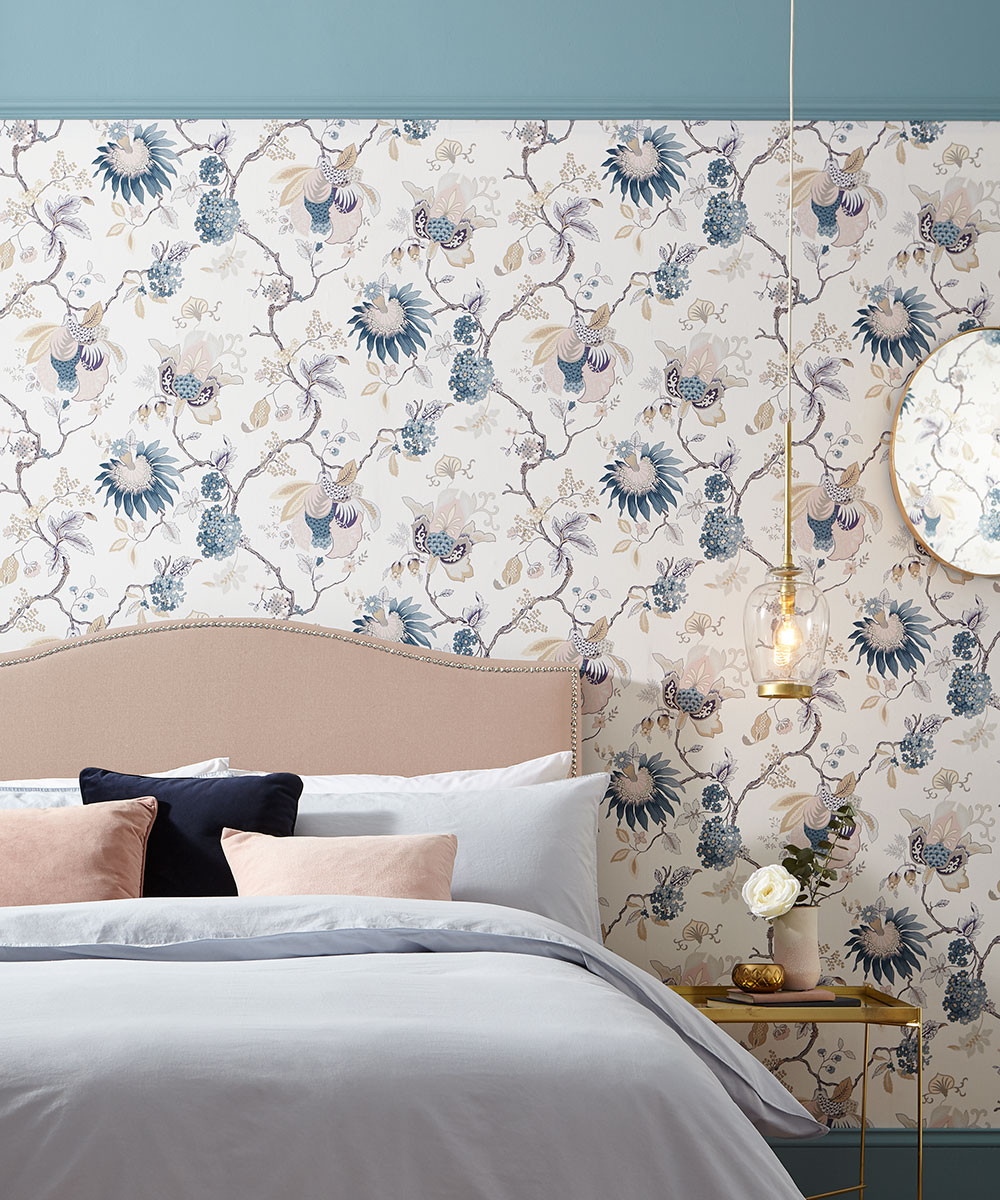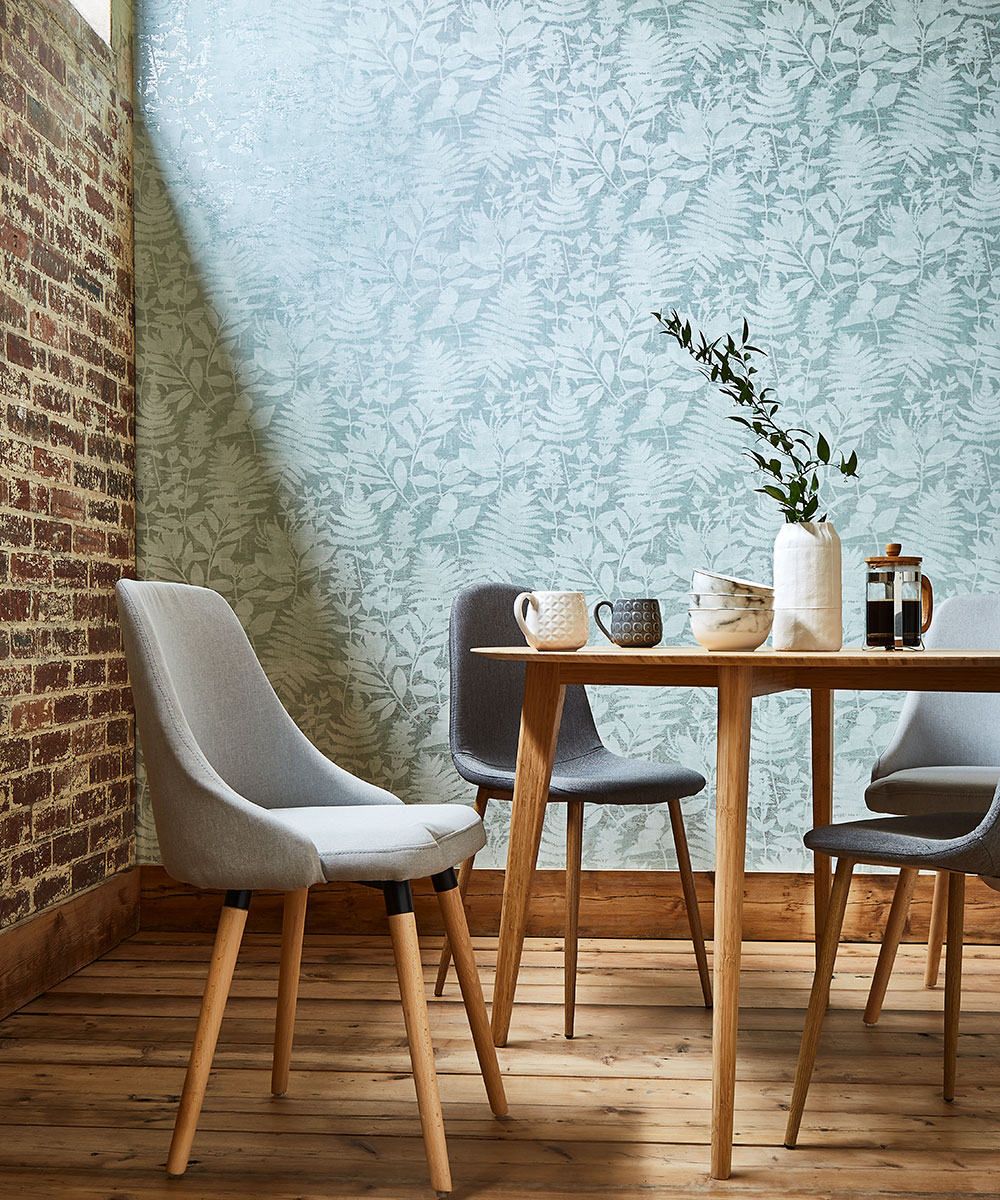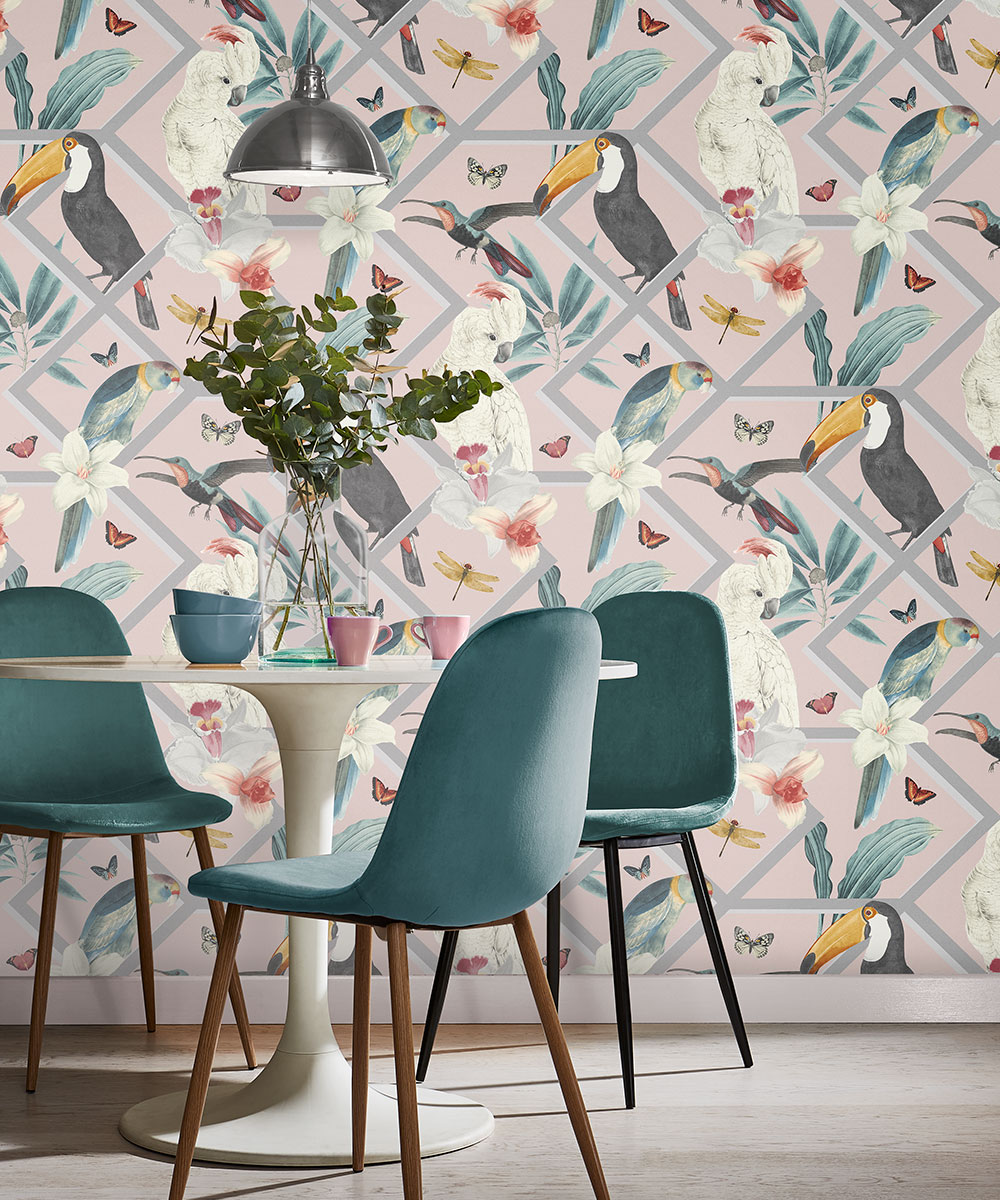How to wallpaper a feature wall – to add pattern and colour to an accent wall
Give one wall the wow-factor
Feature walls are still very much a thing, considered an ideal way to invigorate a room without too much time or money. Feature walls also give you the opportunity to embrace pattern which you might otherwise avoid, for fear of overpowering the decor.
If you’re looking for an easy DIY and decorating project to refresh your home, wallpapering an accent wall in your dining room or bedroom, or adding feature living room wallpaper ideas to your space could be just what your space needs to take it from drab to fab.
Jody Hudson, Stylist and James Hughes, In-House Decorator at Graham & Brown shares their step-by-step guide on how to wallpaper a feature wall. Use this simple advice, and reinvigorating your room should be a breeze…
How to wallpaper a feature wall

1. Prepare your wall
Preparing your walls for wallpapering is quick, easy and essential. First start by removing any grease, dust or dirt with a damp sponge, and fill in any small cracks with filler. For really troublesome walls, think about applying a lining paper first, to get a smooth base.
2. Draw a plumb line
Start by drawing a plumb line (a vertical straight line from which you will hang the first drop of wallpaper against) about 50cm from the left-hand corner of the wall you are about to paper.
3. Paste the wall
Apply wallpaper paste directly to your wall with a paint roller or wide brush. Paste over the plumb line and at least 2cm wider than the width of the wallpaper.
Use a slim paint brush to add paste at the top of the wall, around sockets and just above the skirting, to avoid the wallpaper lifting when dry.
Sign up to our newsletter for style inspiration, real homes, project and garden advice and shopping know-how

4. Hang your paper
The wallpaper can then by hung, straight from the roll, using a clean, dry paint brush to smooth it into place, allowing 2-3cm extra at the top and bottom. The wet waste will allow you to wiggle the paper into the right spot, lining it up with the plumb line, then starting at the centre, brush out any lumps or air bubbles to the side.
5. Trim your wallpaper
Once smooth, cut the excess paper at the top and bottom with sharp scissors or a craft knife.
6. Move to the next drop
For the second drop, check that your design fits together along the edges of the wallpaper. Starting at the top, match the paper as your hang it from the roll, lightly brushing the paper to the wall as you go- the paper will slide into place on the paste.
When you get to the bottom of the wall, double-check that the pattern matches and there are no gaps- loosely pulling back the paper and brushing it back down if there are any bubbles- the paper is pretty forgiving!
7. Repeat until the wall is covered
Repeat until you have covered your wall and use a damp cloth to remove any paste that may have oozed out onto the paper.
So which walls in your home will your be transforming this weekend?
Which wall should be a feature wall?

A feature wall can define a space so choose your wall wisely. They’re a brilliant way to highlight existing architectural features or zone the space in an open plan home. Chimney breasts and walls behind headboards make for interesting focal points.
What colours should the other walls be?
Adding a feature wall can be a great way to inject colour and pattern into your home, but the whole room doesn’t have to be bold and bright to make a statement.
Graham & Brown pairs each of their wallpapers with four co-ordinating paint shades, so you choose to match with a more neutral hue to give your room soothing balance.

Holly Walsh is a freelance Interiors Writer and Shopping Editor, but worked in-house here at Ideal Home for nearly 10 years. With a background of studies in Interior Design, her career in interior journalism was a no-brainer and her passion for decorating homes is still as strong now 15 years after she started, as it ever was. While Holly has written for most of the home titles at Future, including Livingetc, Country Homes & Interiors, Homes and Gardens, Woman & Home and Style at Home, Ideal Home has always been her ideal home, and she can still be found sharing her expertise and advice across both the printed magazine and the website, while also raising her two young children.